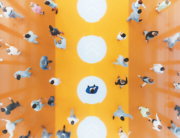If recent world events have proved anything, it is the value and impact people have on an organization, and by extension, the value of the companies that help to supply those people — both temporary and permanent workers.
Personally, I defaulted to my knowledge and expertise to confront the challenges the pandemic brought to us and often struggled to find ready-made answers. Of course, there weren’t many readymade answers to be found. Contingent workforce professionals, just like anybody else around us, have had to “learn on the job” and continue to evolve from the traditional way of managing the contingent workforce into a more agile way of working. While uncomfortable, this is a situation worth acknowledging openly.
Suppliers tend to look up to programme leadership for guidance, experience and decision-making. We are often setting the vision of our programmes and executing in alignment with company priorities. Attracting and engaging and then motivating and taking care of our people have significantly changed during the last 18 months, and very few of us were “ready” or “trained” for the events that got us here. But what took us here, will not take us there.
This is a journey, and our suppliers are on it with us, too. In times of incessant learning, we need suppliers that are willing to contribute, create and have skin in the game with us. For me, being able to count on our suppliers to progress and experiment together was extremely valuable and a great asset to my programme. A crisis can happen at any time. While the pandemic continues globally, there are any number of emergency situations that can affect a client’s programme. Adaptability, patience and creativity are critical success factors and they need to come from all parties in the process.
As I reflect on the last 18 months, I have the following advice for suppliers.
Step Up
I strongly encourage all suppliers to step up and act as partners who actively seek unprecedented solutions along with us, the buyers. At times, this will entail suggesting and developing strategies that might be relevant for the buyer organization — even when this might not be the most obvious solution for them. Other times, it will mean sharing best practices from other organisations and acting as connectors to exchange experiences. We need suppliers with skin in the game.
Let’s take a journey together, drawing from subject-matter expertise and innovating and creating along the way. Here’s what collaboration with my suppliers looks like, and how we were able to benefit from it.
Co-creation. I could count on certain suppliers to be ready to brainstorm based on their expertise and capabilities. We all were in the same unchartered waters, but having their varied perspectives enabled us to come up with ideas I couldn’t have thought up on my own. It was from such collaboration that my program was able to identify alternative routes to navigate the new challenges the pandemic brought to us, striking a balance between the social and commercial aspects involved.
Openness. Uncharted waters can be scary, and some might be hesitant to risk relationships and performance in the face of the unknown. Through my suppliers’ openness to try new things and transparency to learn and integrate it into new practices, we were able to put such plans into action — and modify our approaches as we went. Without openness and transparency, we would have struggled — and perhaps failed — to enact our solutions that kept our business running.
Relevant data. Our suppliers have access to data relevant to our market as well as our regions through their own network of clients. Because we were able to leverage this data and tap our suppliers’ experience, we were able to draw potential scenarios and solutions for the new challenges we were facing, enhancing performance and customer satisfaction, and enabling funds for the company to reinvest in our core business.







